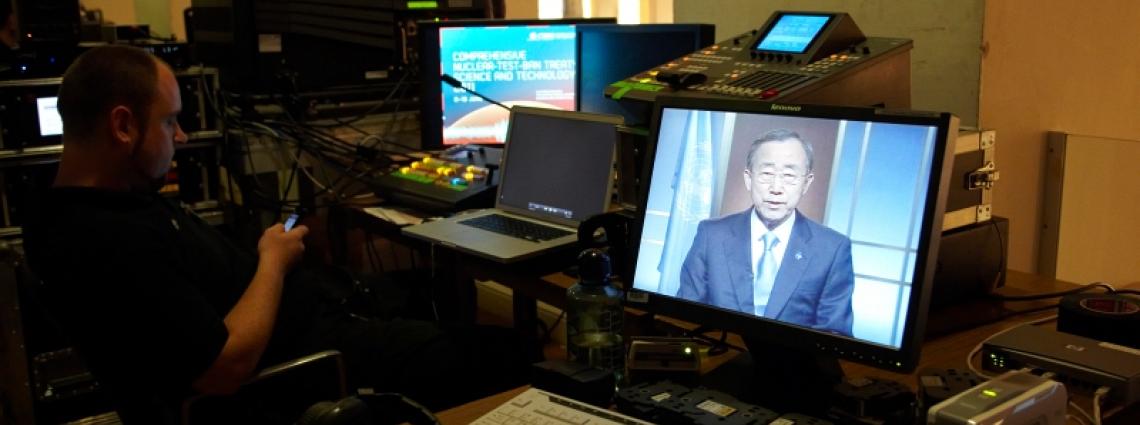Verifying the CTBT -
an unprecedented technical undertaking
an unprecedented technical undertaking
“The Comprehensive Nuclear-Test-Ban Treaty [CTBT] is widely recognized as a milestone, in promoting nuclear non-proliferation and disarmament. But above and beyond that central mission, and even before entering into force, the CTBT is saving lives.” In his video address to participants attending the Science and Technology 2011 (S&T2011) Conference in Vienna, UN Secretary-General (UNSG) Ban Ki-moon explained how the Preparatory Commission for the Comprehensive Nuclear-Test-Ban Treaty Organization (CTBTO) “quickly sent monitoring data to Japan and other Pacific communities and shared valuable information with the International Atomic Energy Agency” after the tragic March 11 earthquake and tsunami. The UNSG also commended efforts by the CTBTO “to advance the science and technology that underpin the global ban on nuclear testing.”
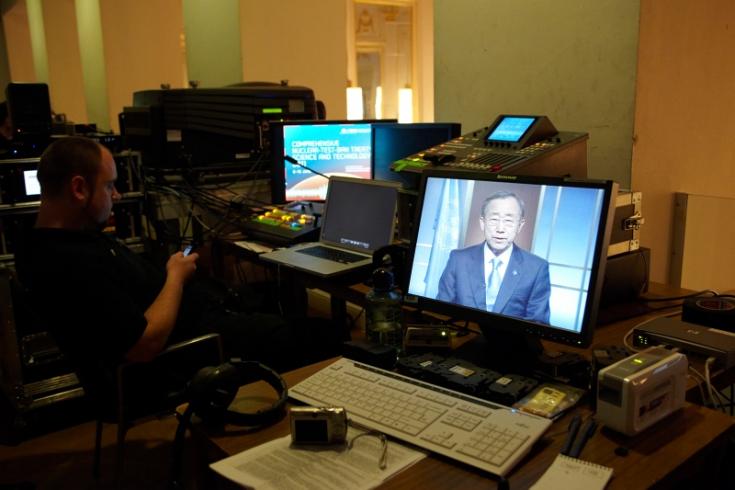
<br>Even before entering into force, the CTBT is saving lives”, said UN Secretary-General in his video address (click to see).
Even before entering into force, the CTBT is saving lives.
Remaining at the forefront of verification technologies
Highlighting the necessity of a permanent and fruitful exchange with the scientific community to allow the CTBTO to remain at the forefront of the technologies of relevance for verification, the Vice Chancellor and Foreign Minister of the Republic of Austria, Michael Spindelegger, reiterated Austria’s commitment to ensuring the Treaty’s entry into force, which he described as “long overdue and necessary.” Spindelegger also referred to some of the potential benefits of CTBT data, saying: “The Fukushima accident gave yet another glimpse of the enormous potential that this system provides much beyond the original intended use of nuclear test monitoring.”
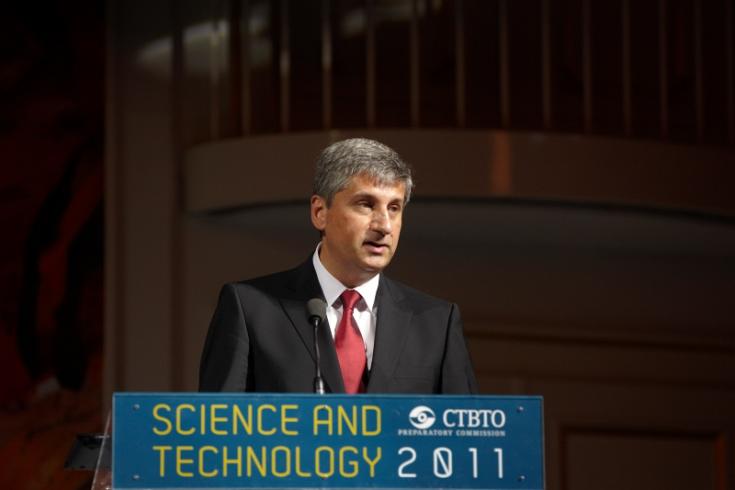
<br>Austria’s Vice Chancellor, Michael Spindelegger, described the CTBT’s entry into force as “long overdue and necessary."
The Fukushima accident gave yet another glimpse of the enormous potential that this system provides much beyond the original intended use of nuclear test monitoring.
A scientific pilgrimage to Vienna
Around 750 scientists, diplomats, representatives of civil society and the media congregated at the Hofburg Palace in Vienna from 8 to 10 June. Representing 105 countries, participants discussed advances in science and technology relevant to test ban verification and explored scientific applications of the CTBT verification infrastructure. The conference also offered a unique opportunity to build partnerships and encourage knowledge exchange between the CTBTO and the broader scientific community. Scientists travelled from all over the globe to share their ideas – from countries as diverse as Australia, Bangladesh, Finland, India, Iran, Japan, Namibia, Panama, the Russian Federation, South Africa, Uganda, the United States of America and Vietnam.
During the opening ceremony, the Executive Secretary of the CTBTO Tibor Tóth expressed his gratitude to all those involved in building up the verification regime. He also described himself as “personally humbled by the dedication of so many scientists so enthusiastically reacting to a renewed call to scientific arms.”

<br>The Hofburg is a former imperial palace of the Habsburg dynasty.
Consolidating ties with the scientific community
The S&T2011 Project Executive Lassina Zerbo informed participants that ties between the scientific community and the CTBTO have been progressively strengthened over recent years. Such ties have been made possible through the 2006 Symposium on Synergies with Science, the 2009 International Scientific Studies (ISS) conference, and several ongoing projects. Zerbo said: “It is essential that the verification effort be enhanced through the adaptation and implementation of new ideas and through the paced adoption of novel technologies.”
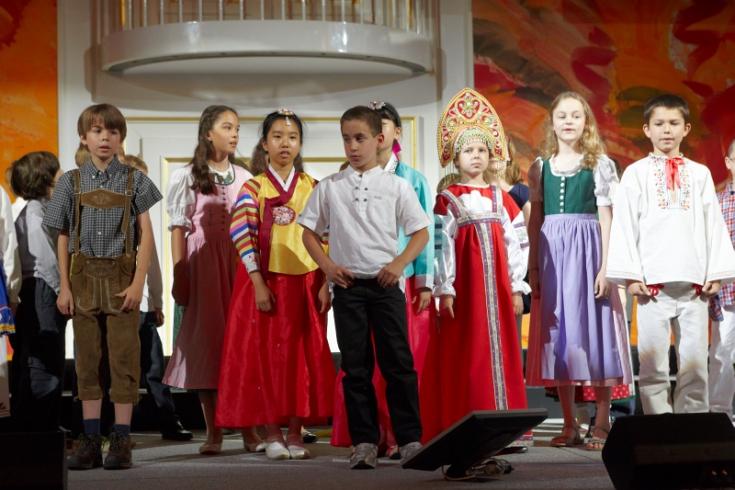
<br>The children’s choir from the American International School in Vienna performed at the opening ceremony.
Keynote addresses by two outstanding scientists
Keynote speakers included Dr Richard L. Garwin, one of the most widely respected scientific advisers to the United States government on a range of issues including the safety of nuclear weapons and arms control, and Dr David Strangway, geophysicist and former chief of NASA's Geophysics Branch. Professor of Earth and Planetary Science Raymond Jeanloz moderated their discussion.
Garwin’s lecture on the scientific roots and prospects for the CTBTO set the scene for conference discussions. Asked whether nuclear weapons can be tested in a laboratory using simulation and if so, whether the CTBT would still be relevant, Garwin replied: “Historically, most nuclear weapons have worked when tested. Now we have much more capable simulation. Anybody can in principle design nuclear weapons. But this doesn’t mean that they will work. A president, a general or an admiral is not going to accept a fleet of nuclear weapons that have never been tested.” As one of the authors of the 2002 National Academy of Sciences report on Technical Issues related to the CTBT, Garwin also stated that "the CTBT is effectively verifiable.”
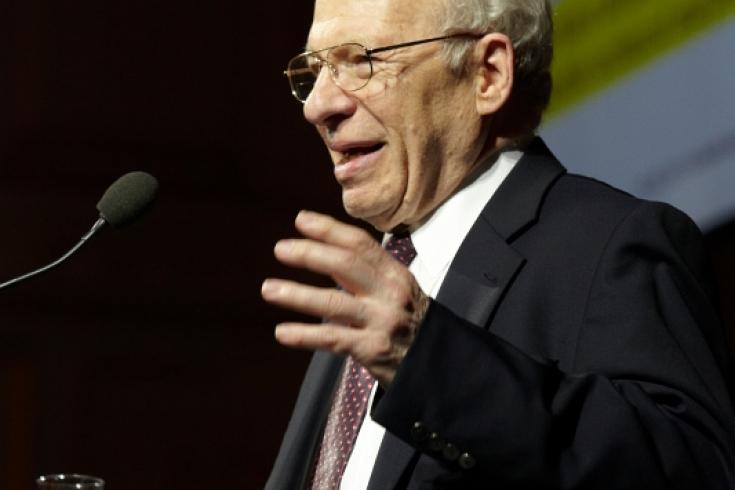
<br>Richard Garwin: The CTBT is effectively verifiable.
As one of the authors of the 2002 National Academy of Sciences report on Technical Issues related to the CTBT , Garwin also stated that ‘the CTBT is effectively verifiable.”
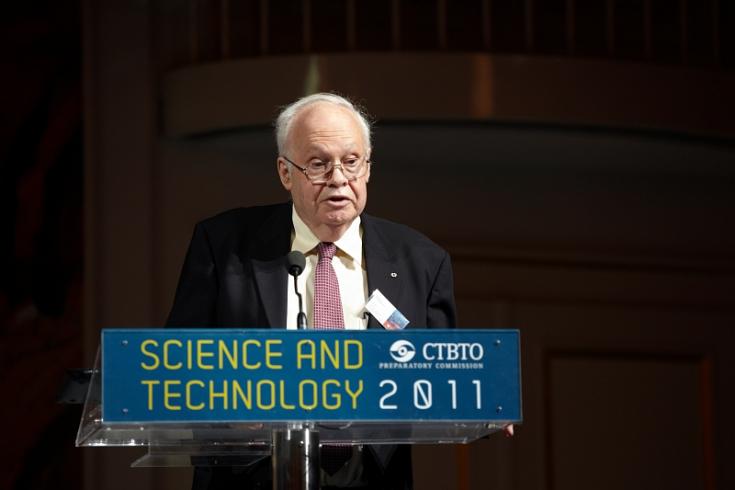
<br>David Strangway stressed the importance of innovation, which knows no discipline boundaries.
Innovation knows no discipline boundaries and can come from unexpected and unpredicted directions. Sometimes it is driven by basic research, but just as often it is driven by specific needs to solve problems.
A multitude of submissions covering five main themes
Theme 1: The Earth as a complex system
Increasing the effectiveness of the CTBT verification regime is largely dependent on advances in studies of the Earth system. A more thorough understanding of this system may contribute to an increased ability to detect signals by the various monitoring technologies, and to improved disaster mitigation and knowledge enhancement.

<br>There were roughly 300 contributions – either as talks or posters.
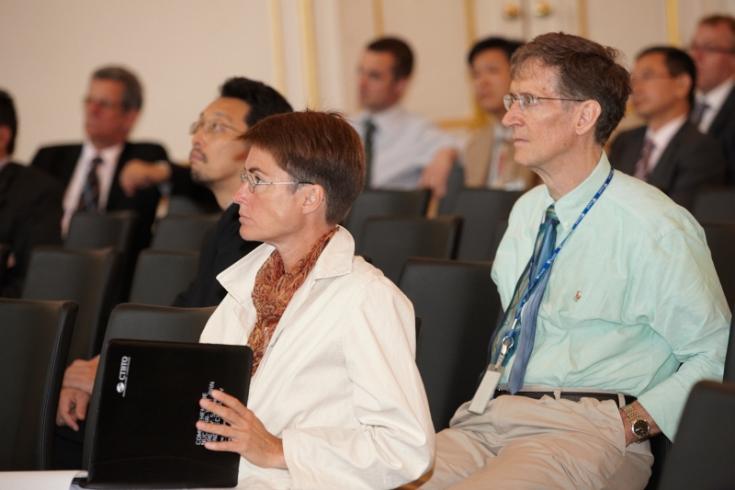
<br>Day 2 - some of the conference participants.
I was struck again and again by the renaissance in our understanding of the atmosphere enabled by the infrasound network.
Submissions to Theme 1 also provided a new insight into how the occurrence of exceptional events, such as the 2004 Sumatra earthquake, occasionally gives rise to the recording of physical phenomena by instruments not designed for that purpose. For example, a seismometer may record a tsunami: seismic recordings of the 2004 Sumatra tsunami were made on an iceberg.

Awaiting the next presentation in the Grosser Redoutensaal.
Theme 5: Creating knowledge through partnerships, training and information/communication technology
Contributions included educational outreach activities aimed at increasing the interest of high school students in science, such as seismology; Ghana’s experience in establishing its National Data Centre (NDC); the raising of awareness among education, policy and science actors to stimulate national research capacities in Uganda; and the forging of broader partnerships to support the CTBT implementation process in Panama. NDC representatives from Austria and Tunisia gave an example of knowledge exchange and cooperation between NDCs. The Austrian NDC had trained Tunisian NDC staff on Atmospheric Transport Modelling (ATM) techniques and the role of ATM in the data analysis process. Another example of international partnerships in scientific experiments was the CTBTO infrasound calibration experiment in the Eastern Mediterranean, which provided an opportunity for infrasound capacity building.
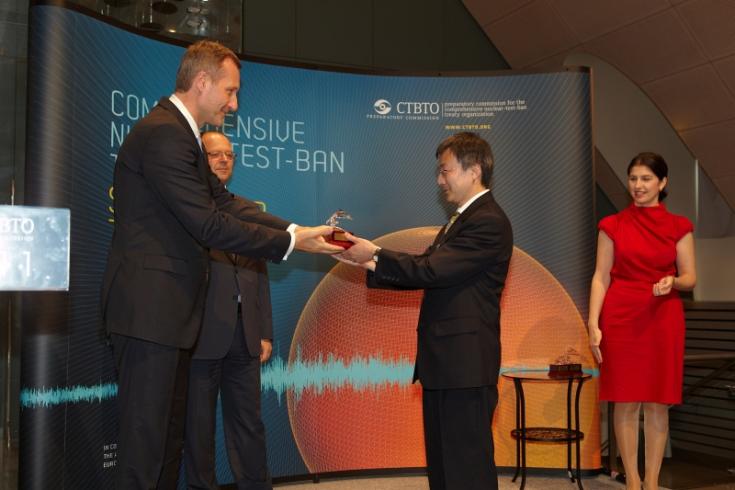
<br>Tatsuhiko Hara received the award for the best presentation for his talk on determining the magnitude of the Tohoku earthquake though the use of special techniques.
Special focus on recent events in Japan
The infrasound observations from the 2004 Sumatra and 2011 Tohoku tsunamis were compared to find ways of identifying an event as early as possible. The French National Data Centre described how it had relied on IMS data to assess the severity of the damage to Fukushima’s reactor cores and to estimate the potential radiological impact on human health.
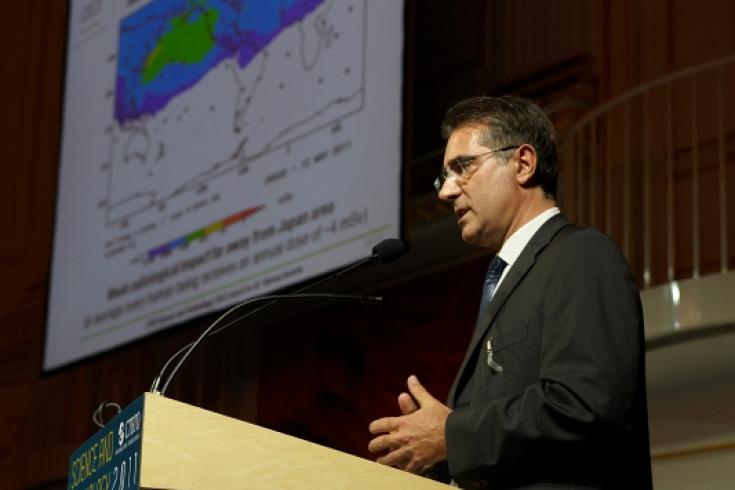
<br>Gilbert Le Petit of the French NDC described how IMS data helped them to assess the situation after the Fukushima disaster.
The French National Data Centre described how it had relied on IMS data to assess the severity of the damage to Fukushima’s reactor cores and to estimate the potential radiological impact on human health.
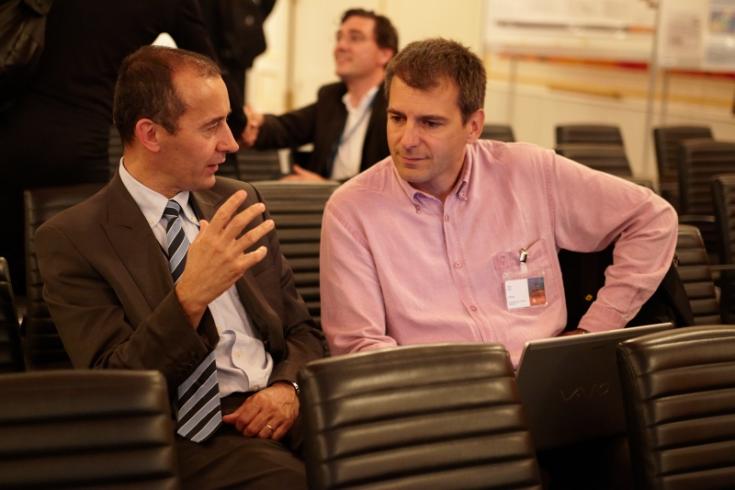
<br>Rich discussions between conference participants.
IMS measurements of xenon-133 were “the highest fidelity measurements ever made after any kind of nuclear accident and far superior to what was available post-Chernobyl.”
CTBTO radionuclide data very useful for Fukushima emergency situation
CTBTO radionuclide specialist Mika Nikkinen said that the CTBTO was and still is involved in a worldwide response to Fukushima events. Nikkinen informed participants that the first briefing to Member States took place on 15 March when the first traces of radionuclides had already been detected by the IMS and shared with Member States and scientific institutions. A series of technical cooperation meetings were subsequently arranged with the CTBTO, the IAEA, the World Meteorological Organization (WMO), the World Health Organization and the UN Office of Disarmament Affairs. The CTBTO has also been participating in meetings organized by the Inter-Agency Committee on Radiological and Nuclear Emergencies (IACRNE).
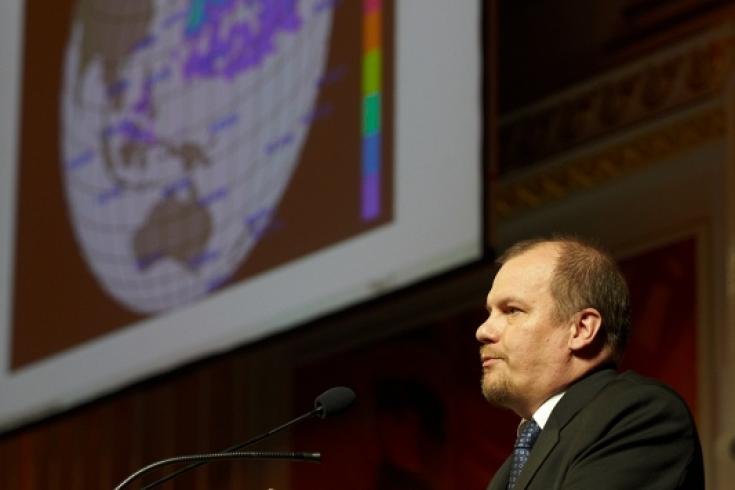
<br>CTBTO’s radionuclide expert Mika Nikkinen outlining the organization’s response to the events in Japan.
The accident at the Fukushima Daiichi nuclear power plant
The session was moderated by BBC Newsnight science journalist Susan Watts, who announced that the focus would be on some of the benefits that could be drawn from this experience for the future. Panelists included Denis Flory, Deputy Director General at the Department of Nuclear Safety and Security at the IAEA, Roland Schenkel, former Director-General of the Joint Research Centre of the European Union, Wolfgang Weiss, Head of the Department of Radiation Protection and Health in Germany, Harri Toivonen, Director of Laboratory at the Radiation and Nuclear Safety Authority in Finland, and Matthias Auer, IMS Radionuclide Project Manager at the CTBTO.

<br>The BBC’s Susan Watts (left) moderated the special session on the Fukushima disaster.
Radionuclide data used to assess radiation risks
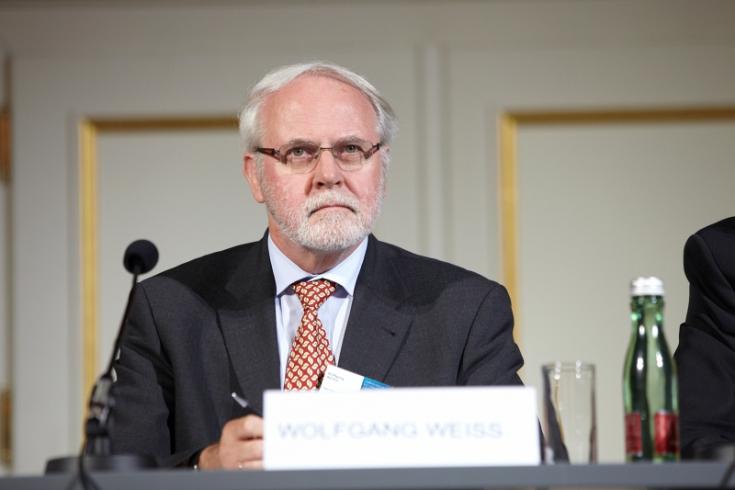
<br>Wolfgang Weiss from the German Radiation Protection Agency said that CTBTO’s first class, high level data helped assess the health risk.
Wolfgang Weiss from the German radiation protection agency praised the uniqueness of the IMS and the ‘first class, high level data’ provided by the CTBTO in real-time, which were used to assess health and environmental risks caused by radiation.
Schenkel, who spoke in his personal capacity, expressed his frustration at the length of time national authorities took to provide journalists with information. He was also dissatisfied with nuclear safety standards.
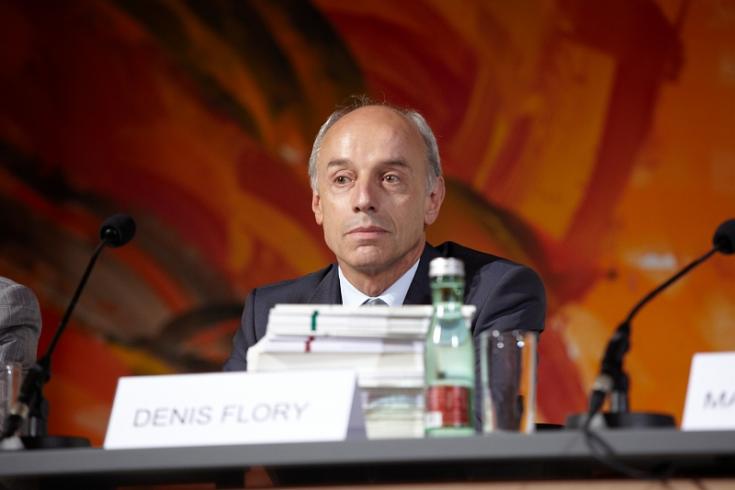
<br>Denis Flory, Deputy Director General at the Department of Nuclear Safety and Security at the IAEA.
Over 400 samples collected from radionuclide stations
Auer said that since the CTBT monitoring system has been designed primarily to detect nuclear tests, the Fukushima accident pushed the system to its limits: A total of 37 stations detected releases from Fukushima and more than 400 samples with multiple radionuclide detections were collected and then analyzed by the IDC. All of the system’s different functions were tested and it ‘proved that it was very well suited to tracking the global dispersions of the radiation cloud.‘
Greater data sharing
Questions from the floor addressed the need to share the data with the wider public. The German policy had been to assess the information before making it available to the public, Weiss explained. While it is important to keep people informed in order to maintain their trust, he stressed that “you don't just throw numbers at the public” as they are not interested in scientific uncertainties.
Nuclear safety issues
Questions were also posed about the level of nuclear safety and whether safety guidelines should be mandatory, to which Flory replied that legally binding or politically binding declarations will help improve safety and confidence in safety standards. Could a mechanism be put in place to ensure that safety radiation standards were adhered to? Weiss responded that well prepared realistic exercises need to be carried out in the future.
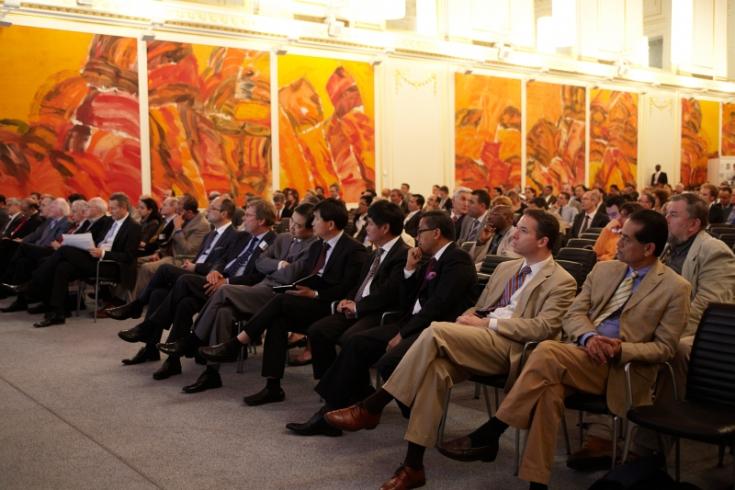
<br>The special session on developments in Fukushima was followed by a high number of conference participants.
Conclusions from a scientific perspective
During the Scientific Concluding Ceremony on 10 June, Professor Paul Richards observed that those who have always recognized the importance of the CTBT as a major arms control initiative to deter vertical nuclear proliferation have now been joined by an enormous new group of people in need of objective and high quality information on the events related to the Japan disasters. Richards explained that some of the usual rules about data access were suspended and the work carried out by the CTBTO is now appreciated by other international and national agencies as well as by scientists and the general public.
New acronyms to categorize posters and presentations
Richards had also invented various acronyms to categorize scientific posters and talks. These included OTM for ‘other types of monitoring’ such as monitoring volcanoes or using infrasound to monitor the circulation of the upper atmosphere. Another acronym Richards invented was MTL for ‘much to learn’- about isotopes used in modern medicine that are derived from the fission of highly enriched uranium, or about the synergies between data derived from different types of monitoring networks. There is also MTL about using cross correlation in several different ways with seismic data.
The CTBTO is doing a very good job at monitoring for nuclear explosions and the work continues to improve, concluded Richards. “In my opinion, it will get significantly better, especially if opportunities are taken to develop a good relationship with the vast community of potential users whose focus may be far from Treaty monitoring.”
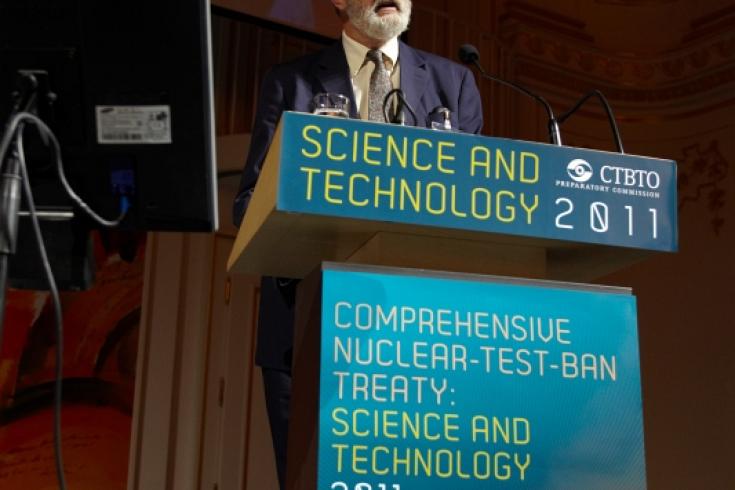
<br>Paul Richards invented several new acronyms – one being MTL for 'much to learn' to reflect on the many new studies that were presented at the conference.
It is essential that the verification effort be enhanced through the adaptation and implementation of new ideas and through the paced adoption of novel technologies.
The CTBT: An unprecedented technical undertaking
Seismologist Jay Zucca from Lawrence Livermore National Laboratory in California declared that “Innovation for me is the overall theme of this meeting. Scientific innovation is going to be key to keeping the monitoring system healthy into the future.”Zucca said that verifying the CTBT is an unprecedented technical undertaking for an international treaty. Meetings like S&T2011 provide a great opportunity for staying engaged with scientists in related fields outside of the CTBTO. Some of the most important advances in the future will probably come from this community so it is important to have a transparent mechanism to bring the best of these new technologies into the CTBT verification system, he stated.
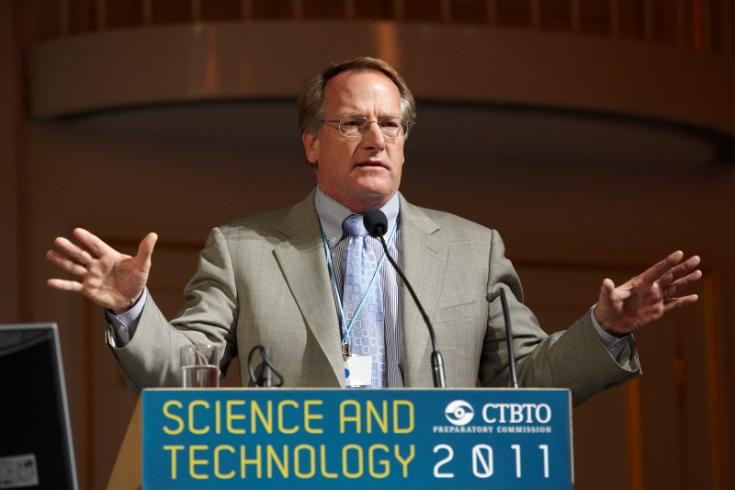
<br>Jay Zucca: The CTBT is an unprecedented technical undertaking for an international treaty.
Innovation for me is the overall theme of this meeting. Scientific innovation is going to be key to keeping the monitoring system healthy into the future.
Promoting interaction with scientists through the vDEC
Zucca also informed participants about the virtual Data Exploitation Center (vDEC), which was one of the ideas proposed at the International Scientific Studies conference in 2009 and is now up and running at the IDC. The vDEC is an important tool for facilitating interaction between the CTBTO and the scientific community and allows researchers to access archived monitoring data and processing software.
Technology Foresight
Zucca also cited the CTBTO’s Technology Foresight exercise as an example of understanding the long-term technology trends for verification technologies. The exercise involves intelligence gathering and vision building aimed at preparing the CTBTO for developments in science and technology that will shape the next generation of verification systems. It aims to promote the participation of the wider science community in a solid assessment of the developments and issues that define today’s technology landscape.
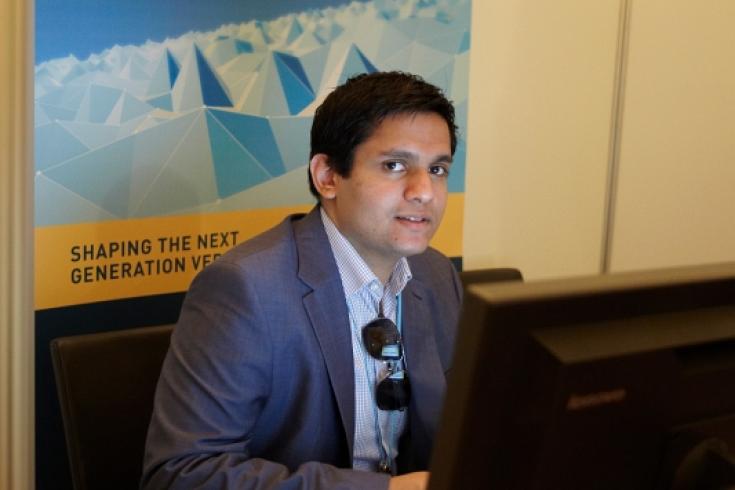
<br>The Technology Foresight exercise is aimed at shaping the next generation of verification systems.
Theme 2: Understanding the nuclear explosion source
A considerable amount of research is being conducted on the use of discriminants and obtaining a physical insight into why they work. In nuclear explosion monitoring, a discriminant is a number derived from observed data whose value can be used to distinguish between natural and manmade events such as between an earthquake and a nuclear explosion.
A number of posters and presentations reported on understanding the radionuclide source term – the release level of radioactive substances -for an underground nuclear explosion and new technologies for CTBT radionuclide measurements and analysis.
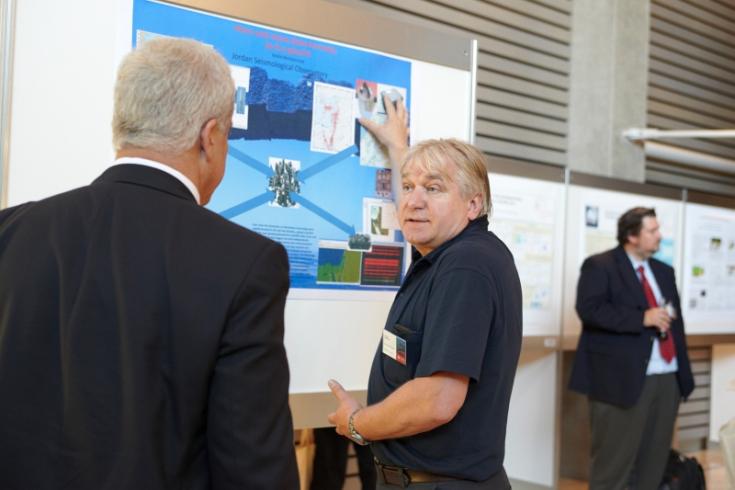
<br>Special sessions gave scientists the opportunity to discuss their poster contributions with fellow scientists.
Meetings like S&T2011 provide a great opportunity for staying engaged with scientists in related fields outside of the CTBTO.
New methods for some measurements are being proposed for further investigation by the CTBTO radionuclide network. For example, the use of tritium, an element with a long half-life which is generated by a nuclear explosion and can be traced decades later. An advanced argon measurement technology was also proposed as it could provide evidence of an underground nuclear explosion months after the detonation.
Several studies gave insights into new developments of on-site inspection technologies such as geophysical or radiation measurement methods. Finally, some poster presentation provided new analyses of the two North Korean nuclear tests in 2006 and 2009 based on the examination of seismic data, reconfirming the explosion-like characteristics of the events.
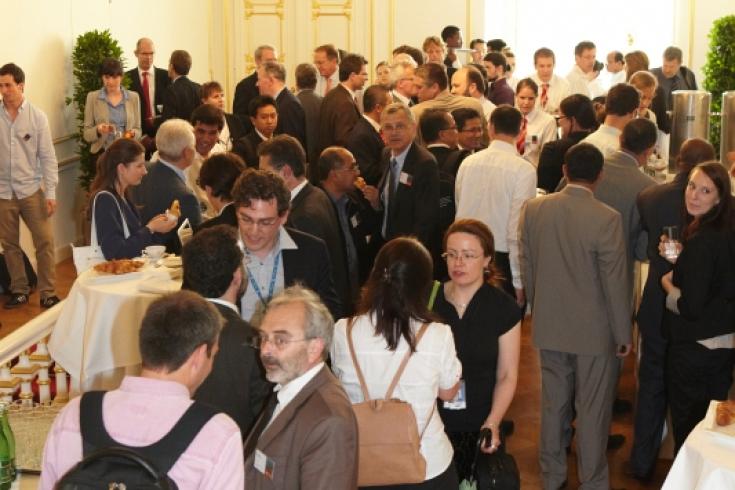
<br>The conference offered many opportunities for discussions.
Theme 3: Advances in sensors, networks and observational technologies
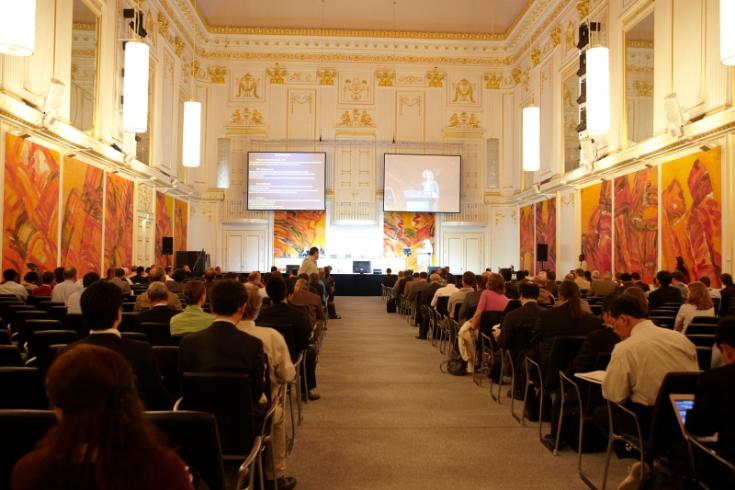
<br>The Grosser Redoutensaal at the Hofburg Palace.
I’m doing a PhD that looks at the vibrations from wind turbines and how they affect the IMS auxiliary seismic station at Eskdalemuir in Scotland. We’ve had a lot of interest from people looking at our poster today, so it’s going very well.
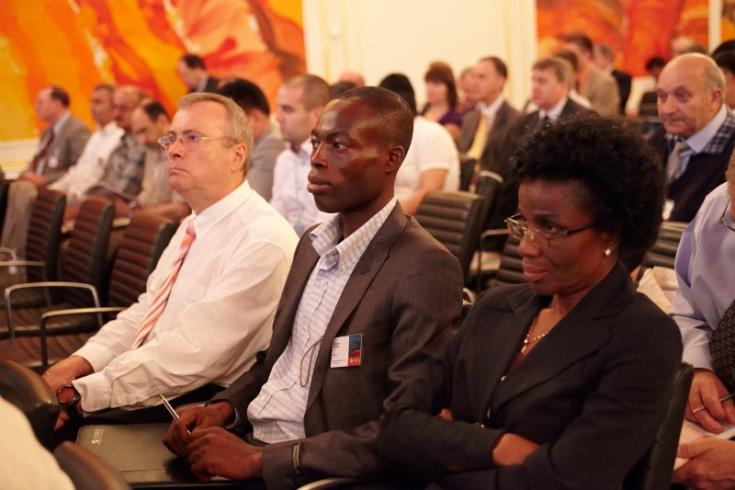
<br>Presentations were well attended throughout the conference.
I’m working on atmospheric observation using GPS. Nuclear weapons tests are important and everyone is interested. So my field of study connects those two topics and that’s generating interest.
Theme 4: Advances in computing, processing and visualization for verification applications
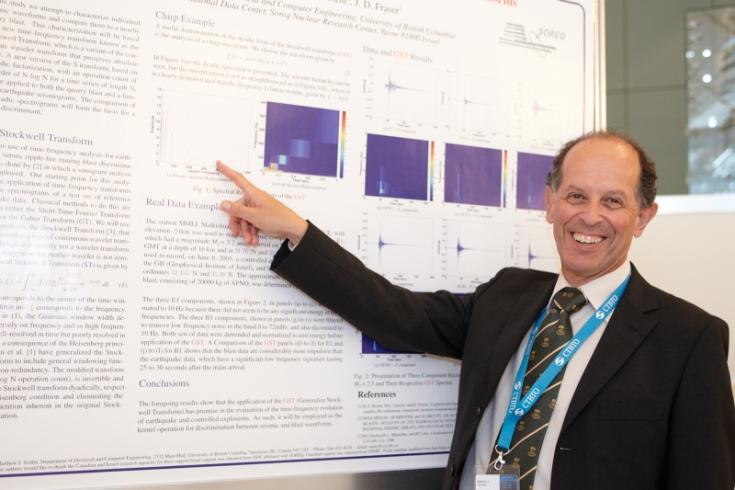
<br>Matthew Yedlin of the University of British Columbia in front of his poster.
This meeting for me is one of the best, if not the best, that I’ve ever attended. I had at least eight requests from people to send them copies of my poster. I had arguments in front of my poster with people disagreeing with me, asking lots of questions. I think it’s a great way to promote science and scientific discussion.

<br>The Kleiner Redoutensaal was the smaller of the two conference rooms.
Recognition of outstanding contributions
In recognition of some of the most outstanding contributions to the conference, prizes were awarded to:
Tatsuhiko Hara for the Best Oral Presentation on determining the magnitude of the Tohoku earthquake by measuring the emission of high frequency energy, a method which is also useful for tsunami warning.
Mohammad Walid for the Best Poster Presentation in which he discusses the advantages and challenges of the new data formats that are being created in science.
Lingsen Meng for the Best Young Scientist for two oral presentations. In one talk he presented a calculation of an actual rupture by combining traditional and new ways of measuring techniques. In his other presentation Meng offered a view into the complexity of the Tohoku earthquake by providing details of the rupture’s initiation, propagation and arrest.
Sarah Fallon from the UK Permanent Mission in Vienna for the Science for Diplomats Award.
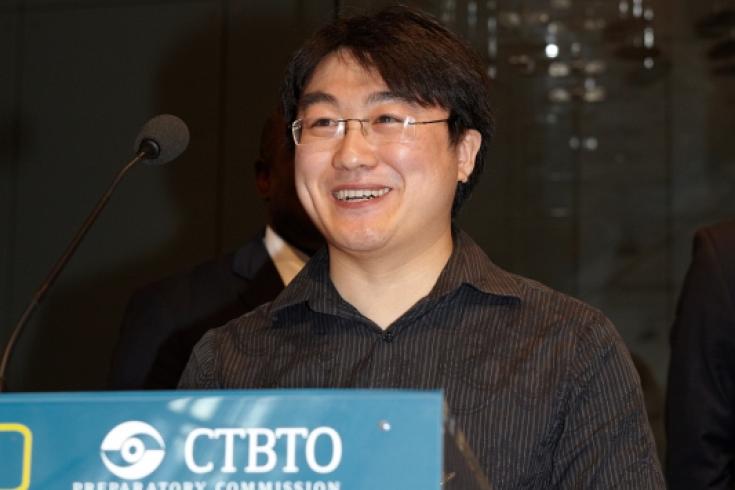
<br>Lingsen Meng was awarded Best Young Scientist for two talks on the Tohoku earthquake.
This type of conference inspires me to serve the people and to communicate with those who hold other views.
Looking ahead to 2013
In his parting words, CTBTO Executive Secretary Tibor Tóth described the huge amount of intellectual energy generated by the conference, the high-level keynote addresses that defined the conference, and the impressive collection of presentations and posters and animated discussions. Following on from the “inspirational drive and intellectual force assembled during S&T2011,” Tóth announced that there will be a new cycle of science and technology for 2013.
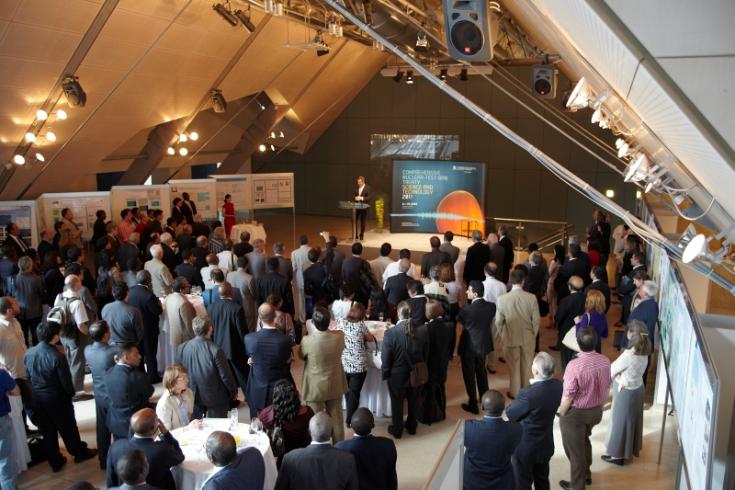
<br>CTBTO Executive Secretary Tibor Tóth invited scientists to the next scientific conference in 2013.
Following on from the inspirational drive and intellectual force assembled during S&T2011, there will be a new cycle of science and technology for 2013.
Delegations commend S&T2011
A number of delegations attending the 36th Session of the CTBTO Member States meeting from 14 to 15 June acknowledged the success of S&T2011. The U.S. Assistant Secretary of State for Arms Control, Verification and Compliance, Rose Gottemoeller, said during the meeting: “I would like to congratulate this organization for the Science and Technology Conference, held June 8-10 at the Hofburg in Vienna. I have heard both in Washington and here in Vienna how useful it was.”
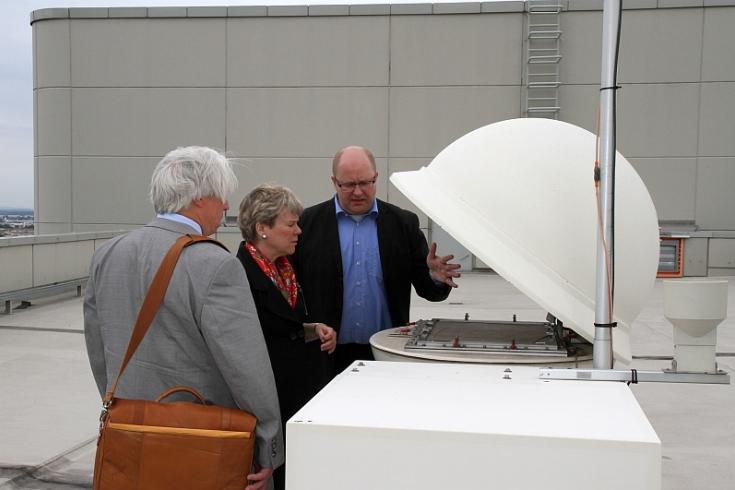
<br>U.S. Assistant Secretary of State, Rose Gottemoeller, visiting the radionuclide station at the CTBTO's headquarters in Vienna.
I would like to congratulate this organization for the Science and Technology Conference, held June 8-10 at the Hofburg in Vienna. I have heard both in Washington and here in Vienna how useful it was.
